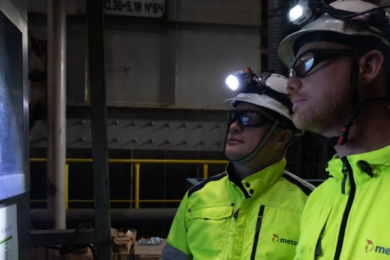The past week has seen the news filled with updates from major miners on shutdowns, slowdowns and lockdowns of major mining sites due to the ongoing spread of COVID-19 worldwide. The list of affected operations is now a long one, affecting all major commodities, from Cerro Verde to Ambatovy and from San Cristobal to Voisey’s Bay. And, while the moves are currently temporary, as many are the direct result of imposed government restrictions, such as in South Africa and Peru, many shutdowns and slowdowns are likely to be extended if the virus’ upward trends of cases and deaths doesn’t start to flatten out and governments take more of a long-term view.
As the shuttering of mines is largely related to protecting their workforces by ensuring social distancing, as many of these big ops employ thousands, of course the question being asked now is: could many of these mines have continued on regardless if they were already more autonomous? And, will the COVID-19 crisis hasten the onset of automation in mining?
Many mines are already looking at autonomous technology, or have already implemented it in some form, whether it be a full or partial autonomous truck fleet or some aspect of teleremote equipment operation such as blasthole drilling or dozer handling. More miners are doing it based on the fact automation has now been proven in efficiency and productivity terms, time and time again. And, it is getting easier as retrofitting existing equipment is now an option, minimising disruption.
But underground and surface pit mining operations are complex beasts. It isn’t as simple as just automating everything to the point where a few overseers make sure it is all ticking over from an ROC in Perth, or Denver, or Johannesburg. An autonomous truck, for example, still requires tyre changes, engine maintenance, fuel and oil top-ups, etc. While work on automating some of these tasks is ongoing, it is not at a point where it can be rolled out industry wide. In surface mining, the big OEMs have commented to IM that excavators are likely to be the last machines to see full automation as the complexity involved currently makes it impractical and arguably unnecessary. Shovel operators “kicking” unmanned trucks in and out of automated loading areas is a core aspect of all autonomous fleets currently.
And, aside from the machines that can be automated, what about all the ancillary machines? Water bowsers, graders, light vehicles carrying geologists/engineers, wheel loaders, explosives delivery trucks, innumerable other equipment service vehicles from dealers, contractors and other parties – there is an almost endless list. Bringing all these units into the autonomous fold would take a while. And the benefits of automation here are not as clear. For a haul truck operating 24/7, the benefit of automation is obvious – higher speeds and no shift changes. But an ancillary machine that is being deployed intermittently at varied locations? There are also other tasks regularly conducted in mines, such as brownfield exploration drilling and grade control drilling, not to mention any ongoing infrastructure development & any new projects or plant expansions requiring construction teams, again all with limited current automation scope.
What about mineral processing, surely these plants are already automated? Well, yes, but up to a point. Electrical boxes, sampling equipment, pumps and valve issues may show up on a screen, but someone still has to go and fix them if there is a problem. Mill liner replacement is becoming more automated but not yet fully and only at a relatively small number of sites. And, what about other maintenance aspects for hydrocylones, flotation cells, thickeners, conveyors, etc? This is still done by humans whether during planned maintenance shutdowns or as part of ongoing day to day servicing.
Metso’s Chief Digital Officer, Jani Puroranta said in a recent article titled Five levels of minerals processing plant autonomy: “Today, minerals processing plants require constant daily intervention by humans to adapt to changes in plant feed, disturbances in operating conditions, and degrading equipment health. These plants can easily employ hundreds of people whose daily job is to monitor the process and the plant, and to take care of maintenance activities. At a fully autonomous plant, such an army of people would not be necessary or at least their role would be very different. Between the two extremes, clearly there must be levels of increasing autonomy.”
He gives five levels of process plant autonomy, topped by full autopilot, where advanced process control has been further augmented by yet additional sensors & analysers. Highly skilled operator is supported by AI and a hi-fidelity, dynamic, real-time process simulator (digital twin). Deep subject matter expertise is constantly available remotely and can collaborate over the same data with the operator. Maintenance is 100% predictive and preventative, and no unplanned shutdowns or other major interventions are needed. While a lot of progress has been made in the steps leading to this level of autonomous capability in mineral processing, we are still quite some distance away.
So, the short answer is that once we get through this COVID-19 pandemic, yes, many mining management teams at mining groups may look to fast track the elements of autonomous operation they were already looking at. But a true fully automated mine is as far off as it ever was, not because it couldn’t be done but because practically and economically speaking it still doesn’t make sense and probably won’t for many years yet.










